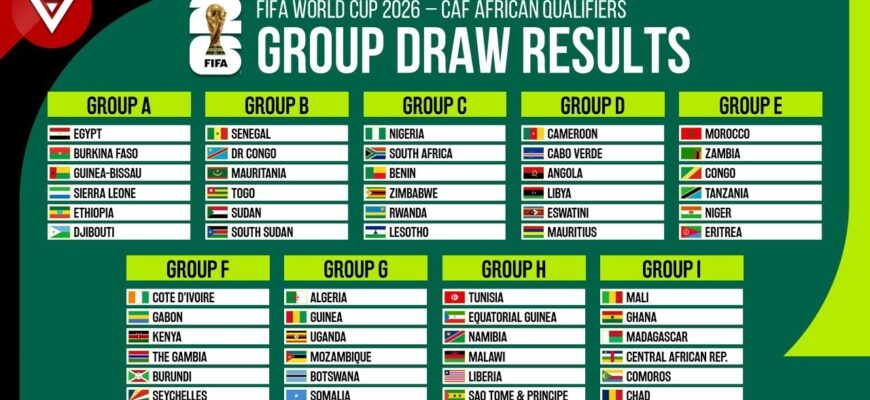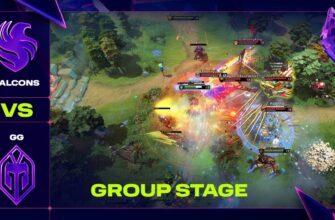The global football stage is a dynamic theatre, constantly shifting with new talents, tactical evolutions, and the relentless march of time. As the 2026 FIFA World Cup edges closer, with a grand expansion to 48 teams, the qualification campaigns across confederations are already providing ample drama. Many spots have been claimed, some securely, others with a nail-biting finish still on the horizon. This period is a critical barometer, revealing which nations are building momentum, which are quietly exceeding expectations, and which, surprisingly, find themselves navigating troubled waters.
- The Enduring Titans: Navigating the Qualification Maze
- Morocco`s Ascent and the African Gauntlet
- The Rising Sun: Japan as a Potential Dark Horse
- European Drama: Germany`s Stumble and Italy`s Familiar Treadmill
- CONCACAF`s Conundrum: USMNT in Unexpected Turbulence
- The Unseen Battles and Quiet Achievers
- The Road Ahead: Unpredictability Reigns
The Enduring Titans: Navigating the Qualification Maze
While the World Cup field expands, the top echelons of global football remain fiercely competitive. European powerhouses like Spain and France continue to assert their dominance. Spain, the reigning European champions, have navigated their initial qualification hurdles with a characteristic blend of technical prowess and tactical discipline. France, 2018 World Cup winners, consistently unearth new stars, seamlessly integrating them into Didier Deschamps` pragmatic yet potent system. They are a well-oiled machine, capable of delivering knockout punches even with key players waiting on the sidelines.
South America`s giants, Argentina and Brazil, have also secured their berths. For Argentina, the path was perhaps bittersweet, as Lionel Messi’s potential final official home game for the national team was marked with a brace, leaving fans to ponder his presence in 2026. Brazil, under a new tactical direction, showed flashes of their scintillating best even without some of their biggest names, suggesting a promising rebuild. Meanwhile, Portugal continues to impress with a dazzling array of talent, making light work of lesser opponents, though the question of how to best deploy Cristiano Ronaldo in a modern setup remains an intriguing subplot. England, with a Champions League-winning coach, is in the curious position of being both formidable and occasionally baffling, their true form perhaps only revealing itself deep into the summer of 2026.
Morocco`s Ascent and the African Gauntlet
A true testament to consistent performance, Morocco stands as the first African nation to secure its place, blazing through their qualification group. Their journey echoes their stunning 2022 World Cup semifinal run, retaining a strong core and integrating talents like Brahim Diaz. Their relentless pursuit of an international win record is a clear statement of intent, positioning them as a team no one will relish facing. Africa, generally, presents an extraordinarily challenging qualification landscape, with nations like the Ivory Coast demonstrating remarkable records of wins and clean sheets, yet still facing fierce competition for top spot. Egypt, led by Mohamed Salah, are also on the cusp, relying on a robust defense and Premier League attacking flair.
The Rising Sun: Japan as a Potential Dark Horse
Perhaps one of the most exciting narratives emerging from the qualification period is the undeniable rise of Japan. Often underestimated, the “Samurai Blue” are now being lauded as genuine dark horses for the 2026 tournament. With a growing contingent of players excelling in top European leagues—Ritsu Doan making waves in the Bundesliga, and even Championship standouts struggling to break into the national squad—Japan possesses a depth and quality that demands attention. Their disciplined tactics, technical proficiency, and relentless work rate make them a formidable opponent, fully capable of springing surprises on the biggest stage. This is not just a team, it`s a meticulously crafted project poised to disrupt the established order.
European Drama: Germany`s Stumble and Italy`s Familiar Treadmill
Even the giants can falter. Germany, a nation synonymous with World Cup success, suffered a rare and remarkable defeat, their first-ever away loss in 53 World Cup qualifiers. Slovakia`s 2-0 victory serves as a stark reminder that no group is a guaranteed cakewalk, and even the most decorated teams can face unexpected headwinds. While qualification is still probable, the upset introduces an element of doubt that a team of Germany`s stature rarely welcomes.
Meanwhile, for Italy, the qualification process seems to be a familiar, angst-ridden journey. After missing the last two World Cups, the Azzurri find themselves once again in a precarious position, battling for every point. While a recent 5-0 victory offered some respite, the slow start and the threat of being cut adrift from the top two in their group suggest that the European champions are, regrettably, making a habit of dramatic qualification campaigns. One might almost infer that they enjoy the suspense, just to keep things interesting for the neutral observer.
CONCACAF`s Conundrum: USMNT in Unexpected Turbulence
Across the Atlantic, the host nation, the United States Men`s National Team (USMNT), is grappling with a surprising spell of uncertainty. Despite the buzz surrounding a “golden generation” of talent, recent performances have raised significant alarms. A friendly loss to South Korea, where the USA was chasing the game for long stretches and primarily relied on scrappy late chances to inflate their expected goals, exposed deep-seated issues. The team appears to lack clear positional definitions—who is the starting number one? Who leads the line at number nine?
The coaching staff`s insistence on positive takeaways from games that highlight fundamental flaws feels increasingly out of touch. Key players like Tyler Adams and Chris Richards are exposed to elite club competition weekly, yet they seem to lack consistent partners who share that same high-level experience and cohesion within the national setup. The tactical decisions, such as Christian Pulisic continuing to take corners despite other options, add to the sense of a team struggling to find its identity. While a passionate home crowd can inspire miracles, the current trajectory suggests that a deep run in 2026 feels more like a hopeful dream scenario than a realistic outcome. The raw talent is there, but the pathway to consistent top-tier performance appears fragmented, begging the question: where is the next wave of players ready to smash down the door and demand a starting jersey?
The Unseen Battles and Quiet Achievers
Beyond the headlines, numerous other nations are carving out their paths. Uruguay, under Marcelo Bielsa, has dismantled opponents with an impressive midfield, while Ecuador continues its remarkable run of clean sheets, their defense proving to be a true fortress. South Korea, bolstered by the evergreen Son Heung-min, shows a robust spine, and Mexico maintains a consistent, if not spectacular, presence. Even Canada, another host nation, quietly makes progress, showing tactical clarity and getting the best out of their key players. From the attritional resilience of Paraguay to the consistent winning mentality of Iran, the global qualifying landscape is rich with diverse footballing philosophies.
The Road Ahead: Unpredictability Reigns
The journey to the 2026 World Cup is a marathon, not a sprint, and the early stages have already delivered a compelling mix of predictable dominance, exhilarating upsets, and concerning downturns. The expansion to 48 teams promises even more narratives, more underdogs, and more opportunities for nations to etch their names into footballing history. As the qualification rounds intensify, one thing is clear: the global game continues to evolve, making the anticipation for the next World Cup an experience fraught with both excitement and the delicious agony of unpredictability.









